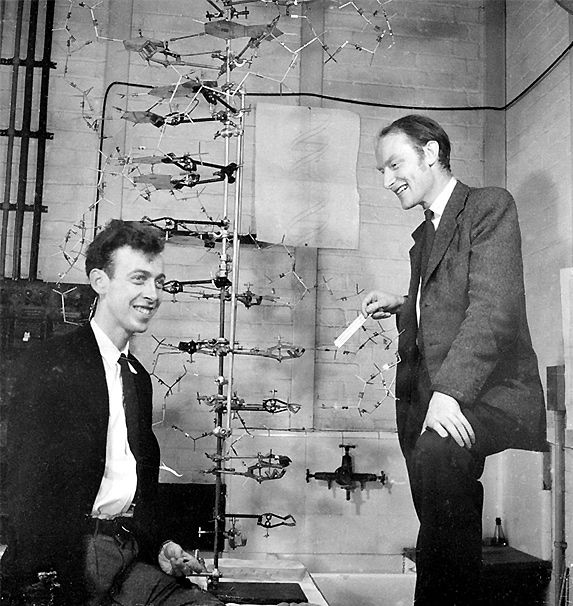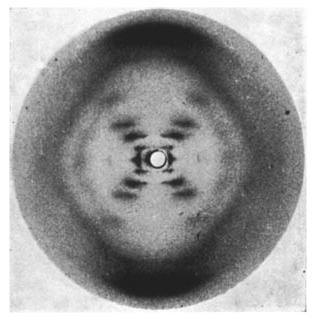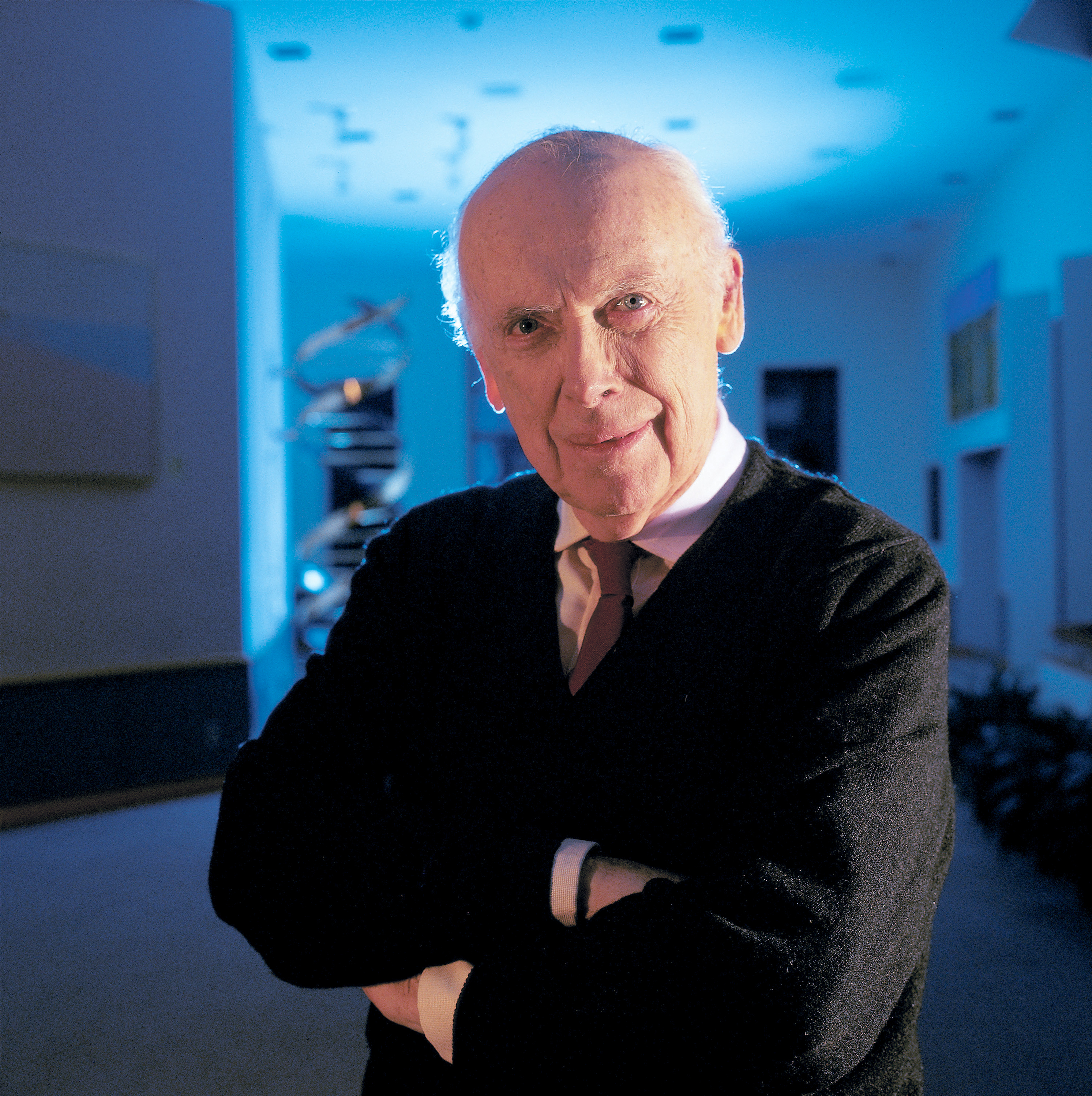Famous Scientists: James Watson
A Biography of James Watson
(Born: April 6, 1928, Chicago, Illinois, United States of America)
Synopsis
American geneticist and biophysicist James Dewey Watson is credited with the discovery oof the double-helix structure of deoxyribonucleic acid (DNA), the carrier of genetic information. For this contribution to science, he was awareded the Nobel Prize for Physiology or Medicine with Francis Crick and Maurice Wilkins in 1962. Watson went on to do work in cancer research and mapping the human genome.

Early Life
James Dewey Watson was born in Chicago, Illinois, on April 6, 1928, and spent his childhood there, attending Horace Mann Grammar School and South Shore High School. At the age of 15, he enrolled at the University of Chicago and was awarded a scholarship for academic excellence. In 1947, he received a Bachelor of Science degree and pursued a Ph.D. in zoology at Indiana University in 1950. From his virology research and from the experiments of bacteriologist Oswald Avery, which proved that DNA influences hereditary traits, James formulated a hypothesis that the gene could be understood only after more was discovered about nucleic acid molecules.
During his graduate studies, Watson was influenced by the work of geneticists H. Muller and T. Sonneborn and microbiologist S. Luria. His Ph.D. thesis was a study of the effect of hard X-rays on bacteriophage multiplication. He learned that researchers in the Cavendish Laboratories at the University of Cambridge were studying the structure of protein crystals by using X-rays that passed through protein crystals to generate photographic patterns. He continued his work with X-rays by learning diffraction techniques. He also met a molecular biologist by the name of Francis Crick, who shared his interest in puzzling out the molecular structure of DNA.

The Double Helix
In 1952, Watson and Crick's initial efforts focused on the structure of the protein surrounding the tobacco mosaic virus, but the pair made no progress with regards to DNA. In the spring of 1953, the duo saw that the primary components of DNA involves four organic bases that were linked in pairs. They also determined the double-helical configuration, which resembles a twisting ladder. The DNA double-helix consists of two intertwined sugar-phosphate chains, with the flat base pairs forming connections between them. The model also showed that the DNA molecule could duplicate itself. Therefore it became known how genes, and eventually chromosomes, replicate themselves. Watson and Crick published their discovery in two articles in the British journal Nature. Their research provided an answer to one of the fundamental questions in genetics.

Watson and Crick used the work of Rosalind Franklin, an English chemist, to arrive at their ground breaking conclusions. Unfortunately, her contribution to their research would go largely unrecognized until after her death. Franklin had compiled several unpublished working papers describing the structural qualities of DNA, and with her student Raymond Gosling had taken an X-ray diffraction image of DNA, known as Photo 51, which would become crucial evidence in identifying the structure of DNA. Without Franklin's knowledge or permission, Maurice Wilkins shared Photo 51 and her data with Watson. Although Watson and Crick included a footnote in their article acknowledging that they were "stimulated by a general knowledge" of Franklin's unpublished contributions, it was Watson, Crick, and Wilkins that went on to receive a Nobel Prize for their work in 1962, four years after Franklin had died of ovarian cancer.

Academia
Watson went on to teach at Harvard University from 1955 to 1976, where he taught biology and conducted research mainly focused on the role of nucleic acids in the synthesis of proteins. In 1965, he published a widely used biology textbook called Molecular Biology of the Gene. Watson went on to write The Double Helix: A Personal Account of the Discovery of the Structure of DNA, an informal recollection of the DNA discovery and the roles of the people involved in it. In 1968, Watson took a leadership role at the Laboratory of Quantitative Biology and made it an internationally recognized center for molecular biology and cancer research.
From 1988 to 1992, Watson established and directed the Human Genome Project at the National Institutes of Health, where he helped map genes in human chromosomes. He eventually resigned due to conflicts of interests involving investments in private biotechnology companies. In 2007, he became the second person to have his DNA sequenced. His personal genome sequence is publically available on the internet. "I am putting my genome sequence online to encourage the development of an era of personalized medicine, in which information contained in our genomes can be used to identify and prevent disease and to create individualized medical therapies," Watson wrote.
Watson auctioned off his Nobel Prize at Christie's in late 2014, the first time a Nobel Prize was sold by a living Nobel laureate. It sold for $4.1 million, which Watson said would be used in part to raise funds to support and empower scientific discovery, as well as be used to support himself and his family. Alisher Usmanov, a Russian billionaire, purchased the Nobel Prize and returned it to Watson. “It was a huge honor for me to be able to show my respect for a scientist who has made an invaluable contribution to the development of modern science," Usmanov said in a statement. "These kinds of awards must remain with their original recipients.”

Over the course of his long career, James Dewey Watson has been at the center of controversy and honored numerous times, taking home the John Collins Warren Prize of the Massachusetts General Hospital in 1959, the Lasker Award in 1960, and the Nobel Prize in Physiology or Medicine in 1962. Additionally, he is a member of the American Academy of Arts and Sciences, the National Academy of Sciences and the Danish Academy of Arts and Sciences.
This article contains excepts from "The Britannica Guide to the World's Most Influential People" and "James D. Watson Biography".